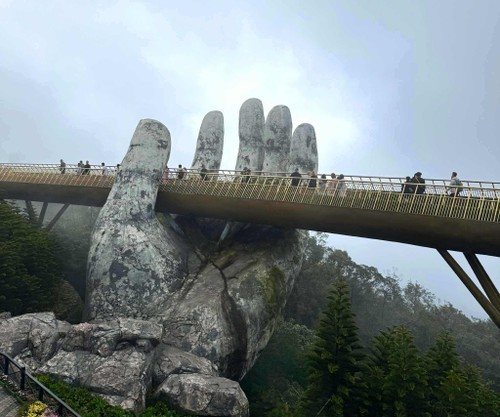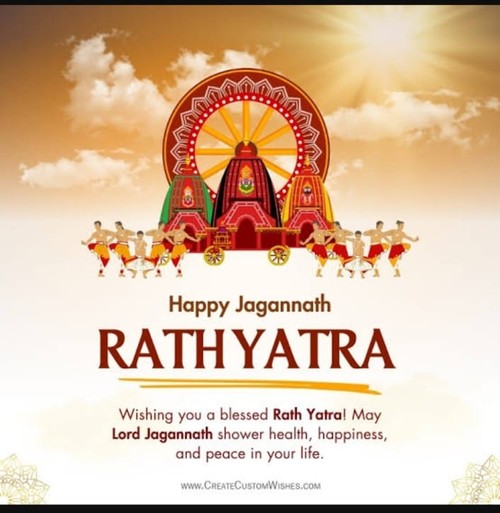 The Golden Bridge, an iconic pedestrian bridge in Sun World Ba Na Hills, Da Nang, Vietnam (photo: Cam Thi) The Golden Bridge, an iconic pedestrian bridge in Sun World Ba Na Hills, Da Nang, Vietnam (photo: Cam Thi) |
A: We’d like to officially announce that the contest “What do you know about Vietnam?” is now closed for submissions. In the final days leading up to the June 30 deadline, we received a surge of entries from listeners, many of whom seemed to believe in saving the best for last!
B: A big thank to everyone who participated and took the time to share your thoughts and knowledge about Vietnam. Professor Md. Sahadot Hossain from the Department of Geography & Environment, Gurudayal Government College, Bangladesh, and President of the Association of Radio Listeners Club Bangladesh, told us that many members of his club took part in the competition.
A: It’s wonderful to hear that. We truly appreciate your enthusiasm and continued support for the Voice of Vietnam. Please send our best wishes to all members of the Association of Radio Listeners Club Bangladesh. We hope to receive more feedback and participation from you in upcoming VOV activities.
B: Regarding your concerns about the submission deadline and the difference in delivery times between postal and electronic entries, please don’t worry. We receive email entries immediately, of course. For postal submissions, we take the postmark date into account. As long as your letter was sent on or before June 30, it will be accepted, even if it arrives after June 30. The deadline is now past and we have already begun to process the submissions.
 We thank Bidhan Chandra Sanyal for sending us greetings on Rath Yatra, a major Hindu festival. We thank Bidhan Chandra Sanyal for sending us greetings on Rath Yatra, a major Hindu festival. |
A: Malik Allah Bachaya Khokhar of Pakistan’s Sungat Radio Listeners Club emailed us to say: “I especially appreciate the balanced coverage of local and international news, as well as the special features that highlight Vietnam’s tourism, cuisine, traditions, and music. I enjoy segments like “Cultural Rendezvous,” “Letter Box,” and “Discovery Vietnam,” as they offer a window into the heart of Vietnamese society and allow international listeners like me to connect more closely with your country.”
B: Allah Bachaya also participated in VOV’s contest. He told us: “I sent my entry with a lot of excitement and interest, hoping to express my admiration and support for your wonderful efforts. It was an excellent opportunity to engage more deeply with your station and show my appreciation for the work you are doing in building international friendship through radio. I look forward to more such events and hope to continue listening and participating actively in your programs.”
A: We are delighted to hear about your enthusiastic participation in our contest. Thank you so much for your kind words. We look forward to your continued engagement in future programs.
B: Another Pakistani listener, Muhammad Aqeel Bashir, emailed us to say that he enjoys our radio programs, especially the news and Current Affairs. He likes how VOV’s reporters speak with strong knowledge and truth, showing journalistic skill and respect for the listeners.
A: Listening to Tuesday’s news bulletin, he was interested to learn about the friendly meeting between Vietnamese Vice President Vo Thi Anh Xuan and Pope Leo XIV in Vatican. “I liked how both sides spoke with peace and respect, and wanted to grow stronger ties. It made me feel proud to see Vietnam working for good relations with other countries. I was also touched by the Pope’s wish to visit Vietnam, which I believe would bring more understanding between people of different faiths.”
B: Thank you for listening and sharing your thoughts. We always wait for your next report.
A: News about Vietnam’s new two-tier local government model, which will began on July 1, has gotten a lot of attention from our international audience.
B: Azam Ali Soomro commented on our website: “Vietnam's implementation of a two-tier local government model strikes me as a crucial and timely administrative revolution. Its ambition to streamline the apparatus, involving over 1.5 million officials across 34 provinces and thousands of communes, promises significant efficiency gains. This structural simplification seems fundamental for tackling bureaucratic inertia.”
A: Vicentiu Gheorghe of Romania wrote: “Party General Secretary To Lam’s inspection of the two-tier local government rollout in Hanoi underscores the leadership’s commitment to modernizing governance and enhancing grassroots engagement. He emphasized aligning immediate tasks, like organizing the Party Congress, with long-term development goals, highlighting that institutional reform is both a structural and political commitment to better serve the people.”
B: The implementation of the two-tier local government system nationwide marks a major step in its governance reform. This synchronized effort demonstrates Vietnam’s commitment to strategic, sustainable, and people-centered governance innovation.
 Ban Gioc waterfall in Cao Bang, Vietnam (photo: caobangtourism.vn) Ban Gioc waterfall in Cao Bang, Vietnam (photo: caobangtourism.vn) |
A: German listener Ralf Urbancyk asked: “Are there any cross-border tourism projects along Vietnam's borders with Laos and Cambodia similar to the Ban Gioc–Detian waterfall project between Vietnam and China?”
B: Yes, there are some notable cross-border tourism initiatives between Vietnam and its neighbors Laos and Cambodia, though they are currently as popular with tourists as the Ban Gioc–Detian waterfall project with China.
A: The Phong Nha-Ke Bang (Vietnam)-Hin Nam No (Laos) initiative is a transboundary natural heritage nomination currently underway, that aims to win UNESCO World Heritage recognition.
B: The project is a close collaboration between the two countries to protect and promote one of Southeast Asia’s most spectacular karst landscapes. The initiative is being supported by international organizations like the IUCN and the GIZ, who are providing technical assistance in conservation planning and cross-border tourism development.
A: The Hin Namno National Biodiversity Conservation Area in southern Laos has plenty of natural tourism potential in its beautiful limestone caves.
B: The Phong Nha-Ke Bang National Park has twice been honored as a World Natural Heritage site, thanks to its unique geomorphology and global tourism value, as well as Vietnam’s international integration efforts.
A: The Park, a model of “Ecosystem and Biodiversity”, supports multiple forms of tourism, including self-guided exploration and joint venture businesses.
B: Meanwhile, the Cau Treo-Nam Phao border gate area connecting Vietnam’s Ha Tinh province and Laos’s Bolikhamxay province, is a developing zone for border tourism and trade cooperation.
A: Positioned as a strategic gateway between central Vietnam and Laos, this area has been the focus of ongoing discussions aimed at improving infrastructure and facilitating cross-border travel. Plans have been explored to promote tourism routes that link natural and cultural attractions on both sides, contributing to regional connectivity, economic growth, and people-to-people exchanges between the two countries.
B: The Moc Bai (Vietnam)-Bavet (Cambodia) area, located along the border of Tay Ninh province and Svay Rieng province, is a key economic and tourism cooperation zone. Known for its busy trade routes, the area has drawn recent attention for its potential in cross-border tourism development.
A: Efforts have been made to promote short-term visits and cultural exchanges, making use of the region’s convenient access and shared cultural ties. This growing interest reflects broader regional goals to diversify border economies and strengthen people-to-people connectivity between Vietnam and Cambodia.
B: The An Giang (Vietnam)-Takeo (Cambodia) tourism route is a cross-border cultural and religious pilgrimage pathway that highlights the deep historical and spiritual connections between the two provinces. Built to serve both domestic and international travelers, particularly the ethnic Khmer communities on both sides of the border, the route links sacred pagodas, traditional craft villages, and cultural landmarks.
A: These tourism activities not only foster cultural preservation and spiritual exchange but also contribute to local livelihoods and strengthen cross-border cooperation in heritage tourism.
B: That’s a brief introduction to tourism cooperation in Vietnam’s border areas with Laos and Cambodia. Thank you for joining us on today’s edition of “Letter Box”.
A: We hope you’ll keep writing to us to share your thoughts, stories, and questions. Your letters are what keep this program alive and meaningful. Goodbye until next time!